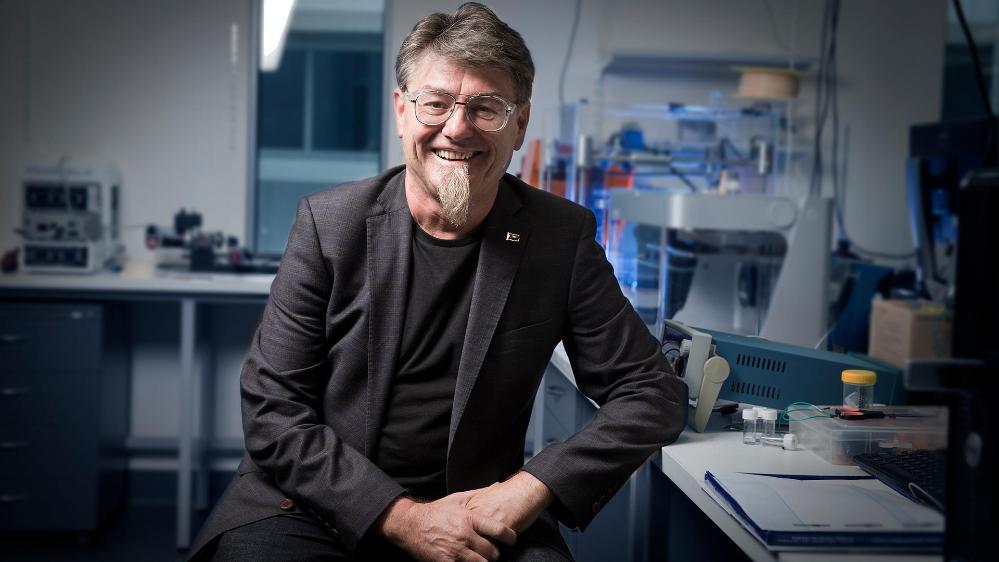August 3, 2020
Building new local industries one bioprinter at a time
UOW researchers to help develop 3D bioprinting system to treat burns during surgery
ARC Centre of Excellence for Electromaterials Science (ACES) researchers at the University of Wollongong will lend their internationally renowned expertise in bioinks to a new project to develop a 3D bioprinting system to treat burns during surgery.
The project, in partnership with start-up company Inventia Life Science and world-renowned burns expert Professor Fiona Wood, is one of 21 initiatives to receive support from the Federal Government’s latest round of the BioMedTech Horizons program.
The team will develop 3D bioprinting hardware and bioinks for skin regeneration that prints a patient’s own skin cells directly onto burns. The revolutionary system, codenamed Ligõ, from the latin ‘to bind’, delivers multiple cell types and biomaterials rapidly and precisely to a wound.
The Ligõ technology will create a new layer of skin where it has been damaged, to replace current wound healing methods where the skin is simply repaired. It is hoped the device will reach first-in-human trials within two years.
ACES Director Professor Gordon Wallace said the Wollongong-based ACES team would provide critical input in the bioprinter and bioink development process.
“ACES is at the forefront of building new approaches to 3D printing, and this project will draw on this significant success we have had in this space in recent years,” Gordon said.
“3D printing has emerged as the most exciting advance in fabrication in decades, and I’m excited to continue to build our local capabilities in this area to establish a new, innovative and sustainable industry for the Illawarra.
“Being part of this skin regeneration project will help to put Wollongong on the map for the commercial manufacture of bioprinting technologies.”
The ACES team has had a strong working relationship with Inventia Life Science for a number of years. The start-up company based in Sydney has proven success in the translation and commercialisation of bioprinting technology.
The team is working towards the Ligõ technology being used in the operating theatre to potentially recreate functional and aesthetically normal skin. The system would achieve these results in a single procedure, minimising treatment costs, the length of hospital stays, and the risk of infection.
Inventia CEO and co-founder Dr Julio Ribeiro said the Federal Government support would help the team to further accelerate the project.
“When we started Inventia Life Science, our vision was to create a technology platform with the potential to bring enormous benefit to human health. We are pleased to see how fast that vision is progressing alongside our fantastic collaborators,” Julio said.
Director of Burns WA Professor Fiona Wood said was excited to be involved in this collaboration, which combines a range of research strengths to achieve well-rounded outcomes.
“The combination of these grants is an excellent example of the way the MRFF is being applied across the continuum of translational research to commercialisation, leading to better patient outcomes,” Fiona said.
Separately, the team also received funding from the Medical Research Future Fund Stem Cell Therapies Mission to collaborate with stem cell expert Professor Pritinder Kaur from Curtin University to utilise this technology for bioprinting skin tissue directly onto model wounds.
